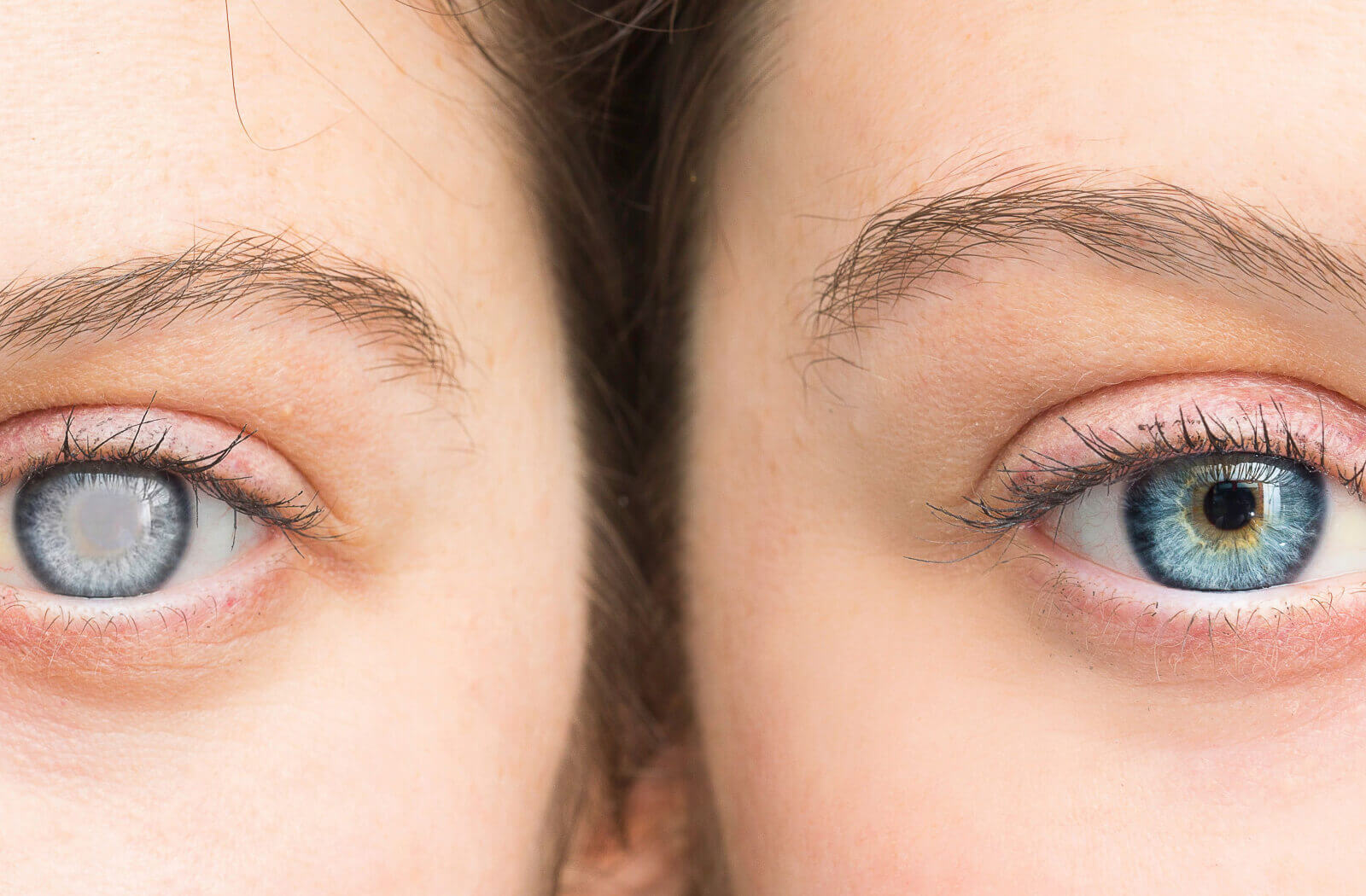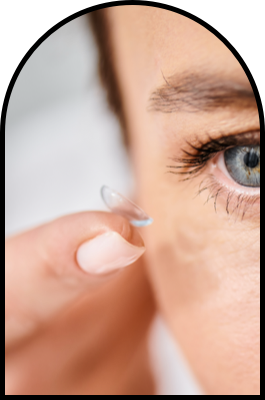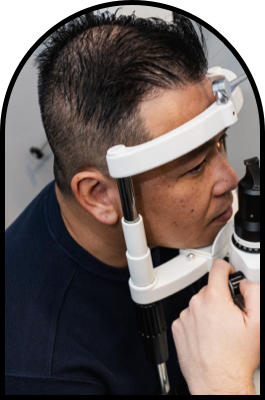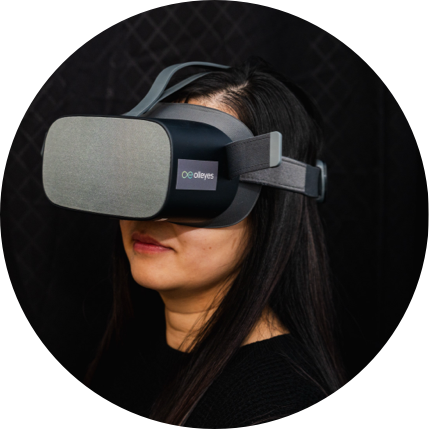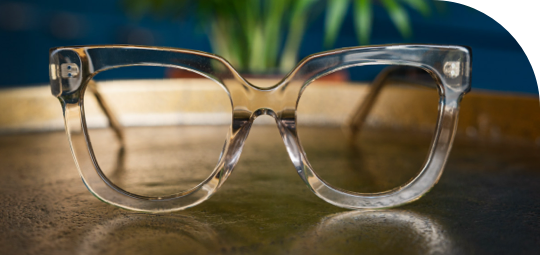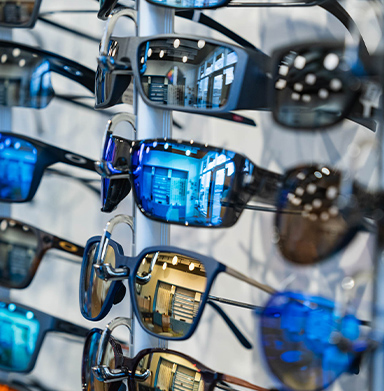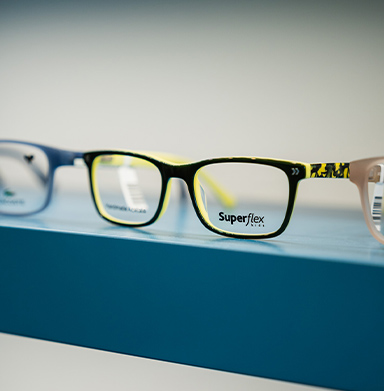Cataracts are a prevalent issue in vision care, particularly among older adults. While they can be a natural part of aging, they are not any less disruptive to your overall health. They can lead to blindness and are already a reality for over 2.5 million Canadians.
As we age, the eye’s lens starts to yellow and harden into a cataract.
The first signs of a cataract are typically blurred vision, faded colour perception, and challenges seeing at night.
Unfortunately, cataracts tend to worsen over time. Your optometrist can help you understand the stages of cataracts, monitoring their progression with comprehensive eye exams and recommending treatments.
What Are Cataracts?
A cataract is a condition in which the lens of the eye becomes cloudy, often resulting in vision loss or blurred vision. The lens is one of the structures responsible for focusing light on the layer of light-reactive cells at the back of the eye called the retina, which sends images to the brain.
When the lens is clouded, it can no longer do its job effectively. This clouding can occur in one or both eyes but cannot spread between them. Instead, cataracts grow independently, one per eye.
Cataracts are typically associated with aging. In fact, 75% of Canadians with cataracts are over 60. But other factors could result in developing them early or to greater severity, including:
- Injury
- Diabetes
- Hypertension
- Obesity
- Autoimmune diseases
- Smoking
- Exposure to UV light
- Certain medications
Recognizing Cataract Symptoms
In cataracts’ early stages, your vision could be minimally affected. So, the first signs may only be noticeable when an optometrist uses advanced diagnostic equipment to examine the lens. Even still, you could correct vision changes associated with mild cataracts with updated glasses or contact lens prescriptions.
As cataracts progress, watch for the signs.
Blurred or Fuzzy Vision
Perhaps the most common early sign of cataracts is a gradual blurring or fuzziness of vision. This can range from mild haziness to more significant sight impairment.
You may need help to read small text in books or distant signs while driving.
Increased Light Sensitivity
People with cataracts may be more dazzled by bright lights like headlights while driving. You may also experience halos around lights or find your vision more easily blurred or obscured in sunny conditions.
This sensitivity is caused by the increased cloudiness of the lens, refracting light in unpredictable ways. The more cloudy the lens, the more light rays can be scattered.
Changes in Colour Vision
One lesser-known sign of cataracts is changes in colour vision. If you notice that colours appear more faded or washed out than usual, or if you struggle to distinguish between certain shades, it could be a sign that you have a cataract.
This is because the lens of your eye can start to yellow or brown as it becomes cloudier, which affects how you perceive colour. It is like putting a filter over your eye that you cannot remove.
Double Vision or Ghost Images
Double vision or ghost images are another sign of cataracts, particularly in one eye. You may see two images of a single object or experience ghosting, where the visual image is replicated and blurred.
This happens because the lens of your eye can no longer focus light correctly, causing the image to be distorted.
Night Vision Problems
Cataracts can reduce the amount of light that reaches your retina, making it harder to see at night. You may be more likely to trip or fall in low-light conditions or struggle to drive at night.
Cataracts affect the light entering your eyes and can change how your eye reacts to that light. Cataracts can make it harder for your eyes to adapt to changes in lighting, such as moving from a brightly lit room to outside in the dark.
Preventing Cataracts
When cataracts are severe enough to disrupt daily activities, the most common solution is cataract surgery. However, you can be proactive and support your high-quality care. Although cataracts are a natural part of the aging process, there are things you can do to reduce your risk of developing them or slow their progression:
- Protect your eyes from UV rays: Wear sunglasses with UV protection outside. Look for sunglasses that block at least 99% of UVA and UVB rays. Additionally, wearing a broad-brimmed hat can help shade your eyes from the sun.
- Quit smoking: Smoking has been linked to an increased risk of cataracts and other eye problems like macular degeneration.
- Eat a healthy diet with antioxidants: Bolster your diet with antioxidant-rich foods like berries, leafy greens, beans, citrus, whole grains, and lean proteins.
- Stay active: Regular exercise can help reduce oxidative stress in the eyes and lower your risk of developing cataracts. Most days of the week, aim for at least 30 minutes of moderate activity, such as brisk walking, cycling, or swimming.
- Get Regular Eye Exams: Regular eye exams are essential for identifying vision problems early and detecting cataracts before they become severe. Your eye doctor can also help you manage other risk factors, such as diabetes, that can increase your risk of cataracts.
Your Eyesight Is Invaluable
Cataracts are a common condition that affects millions of people, particularly as they age. If left untreated, cataracts can cause significant problems with your vision and quality of life.
However, recognizing the early warning signs of cataracts can help you take steps to address the condition before it progresses too far. At Chestermere Optometry, we understand holistic eye care means being proactive.
If you notice any changes to your vision or have concerns about your sight, book an appointment and speak to a qualified optometrist. You can protect your eyesight and enjoy a happy, healthy life with the right care and attention.


